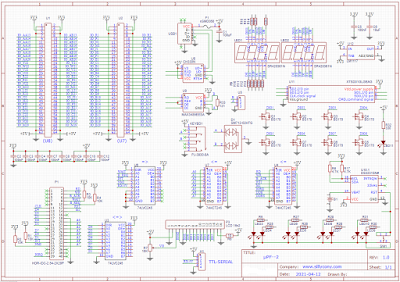By reworking the layout of the components, I finally had enough room to implement all of the extension connector signals. All I have to do now is to create the printed circuit board:
Eventually, I hope to be able to operate these various original expansion boards knowing that they are intended for a µPF1P and not a µPF1 or 1B :
 |
| Printer & I/O boards. |
Interesting informations on this subject are available on this site: https://fjkraan.home.xs4all.nl/comp/mpf1/







